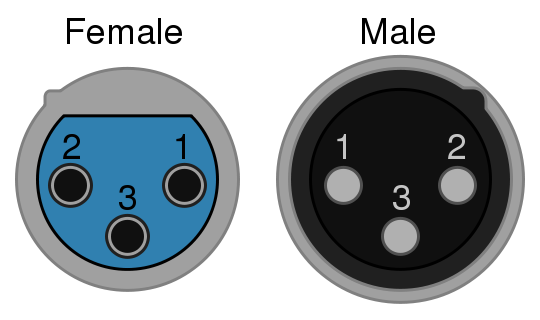Difference between revisions of "XLR Connections"
m (Protected "XLR Connections" ([edit=sysop] (indefinite) [move=sysop] (indefinite))) |
(No difference)
|
Latest revision as of 00:01, 18 July 2010
| Pin | Function |
| 1 | Chassis ground (cable shield) |
| 2 | positive polarity terminal (\"hot\") |
| 3 | return terminal[2] (\"cold\") |
XLR Connector
The most common is the three-pin XLR3, used almost universally as a balanced audio connector for high quality microphones and connections between equipment. XLR3 was also used to transmit MIDI data on some Octave-Plateau synthesizers including the Voyetra-8.
Some audio equipment manufacturers reverse the use of pin 2 (properly the normal input) and pin 3 (inverting input). This reflects their own previous usage before any standard existed. Pin 1 is always ground, and many connectors connect it internally to the connector shell or case.
XLR and ¼" TRS combo jack. Although covered in AES48-2005 and in AES54-3-xxxx, it is worth noting that there is disagreement on the best way to handle the usage of pin 1 at both ends of a cable, particularly with respect to the cable shield, the connector's shell, signal ground, and a third cable wire connected to pin 1 — which may (or may not) be connected to the shield. An XLR3M (male) connector is used for an output and an XLR3F (female) for an input. Thus a microphone will have a built-in XLR3M connector, and signal cables such as microphone cables will each have an XLR3F at one end and an XLR3M at the other. At the stage box end of a multicore cable, the inputs to the mixing desk will be XLR3F connectors, while the returns to the stage will be XLR3M connectors. Similarly, on a mixing desk, the microphone inputs will be XLR3F connectors, and any balanced outputs XLR3M connectors. Neutrik also offers several models of "combo" jacks that accept both XLR and ¼" TS or TRS plugs.
